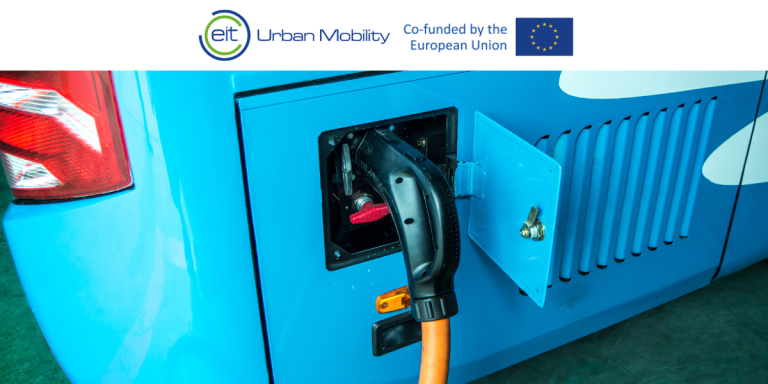On 1 August 2021, ACTIA gave the two-wheel electric traction system its first test drive with the launch of a new business dedicated to micromobility, in particular the Electrically-Assisted Bicycle (e-bike). This activity is therefore operating in this fast-growing market. E-bike sales in Europe are increasing by nearly 50% per year. Driven by its own international competitive conditions, it is mainly guided by the change in urban mobility practices and the digital needs of users and fleet managers alike.
“Micromobility refers to the family of small lightweight vehicles used in urban areas such as electric bikes, folding bikes, hoverboards, electric scooters, gyrowheels, electric skateboards and all other electric motor vehicles. It provides an agile and clean solution for short distances that complement bus, metro, tram, and train journeys, for example. Technology is an important component of this ‘portable’ mobility. The innovations needed are aimed at improving safety, simplifying use, and optimising battery management in an eco-friendly way. Vehicle electrification, connectivity… ACTIA therefore has all the expertise required to meet this new challenge: supporting the development of new practices for multimodal mobility.” Jean-Louis Pech, CEO of the ACTIA group.
As an equipment manufacturer, ACTIA holds all the keys for targeting this market in a highly competitive manner, including:
- its experience as a system designer, especially in electrification and vehicle connectivity;
- its local industrial infrastructure that meets the Automotive quality standards
- its know-how in personalisation according to customer needs;
- its agility and capacity for innovation.
True to its values in favour of more sustainable mobility, ACTIA’s approach to micromobility is based on its eco-design approach which guarantees:
- the reliability and longevity of the proposed solutions;
- repairability;
- the traceability of the materials used and their recyclability.
From the connected car to the connected bike, ACTIA takes the plunge
The e-bike is the most technologically advanced PLEV. It is a bicycle equipped with a rechargeable battery, controllers, and an electric motor. The e-bike is the focus of many technological innovations. The R&D focus areas are generally the same as for the automobile.
So all of ACTIA’s know-how, tried and tested in its traditional markets, is ideally suited to the electric micromobility market: power electronics, the “smart” battery, its electronic management systems and the electric traction system.
Of course, connectivity offers new services to users or managers. Like the car, the bicycle of the future will be connected and equipped with multiple sensors. For example, its connectivity will be used for security to reduce the risk of theft or for the cyclist’s safety to avoid accidents. This connectivity will also help to maintain or repair the e-bike.
For a better understanding: practical examples of the use of connected bicycles
The bicycle’s connectivity means a large number of data relating to the bicycle and the cyclist can be displayed on a remote screen or smartphone.
- Useful information like the different battery assistance modes, its charge level for example.
- Navigation assistance data, a GPS indicating directly on the handlebars the route to be followed on a programmed route.
- The integration of an accelerometer into the system means an alert can be sent to the user’s emergency contact if they fall.
- Of course, bicycle connectivity also makes sense for managing fleets of these smart bicycles.
Finally, connectivity makes the electric bike scalable. Performance, including speed limits, can be updated simply by using a phone, in line with changing regulations.
ACTIA is already developing specific applications for interfacing the electric bike with the user, fleet manager or repair professional and with its environment.
Could the e-bike be poised to overtake the mechanical bike?
Both economical, practical, and eco-friendly, electric micromobility is much more than a fad. PLEVs (Personal Light Electric Vehicles) provide a real answer to urban mobility requirements and above all flexibility and intermodality, with electric bicycles often complementing existing public transport services.
At the top of the list, the e-bike (Electrically-Assisted Bicycle) is the first choice of vehicle to be used instead of public transport or the car in urban areas.
Its use has increased since the COVID-19 crisis: 300% growth is expected in Europe in this market in the coming years. The momentum for the e-bike is only just beginning and 2021 will almost certainly set a new sales record.
The market is supported by the development of cycle paths and by favourable government or local measures.
Who are ACTIA’s future customers in the micromobility market?
To meet demand, the market is getting organised, and supply is expanding. New players and new economic models are emerging in this rapidly changing market.
Traditional distributors such as specialist shops and multi-sports brands are seeing the arrival of new distributors in the market. These are manufacturers who are adopting direct selling or “pure players”. These manufacturers, long confined to the sale of spare parts and accessories, are also looking to take advantage of the potential offered by the boom in the market. The rise of the e-bike has also encouraged the creation of new brands and major retailers such as Auchan and Amazon are also investing in the electric bike niche: With a proven system offering, ACTIA will be able to hold a solid position in these new targets.
The development of the electric bike also contributes to the emergence of new service offerings:
- in the bicycle repair and maintenance segment
- theft insurance
- short-term rental (STR)
- very short-term rental continues via self-service, which should remain the exclusive preserve of those working with local authorities and public transport operators.
These new services require ever more connectivity on bicycles, and manufacturers are constantly developing their models to take advantage of these opportunities. In this rapidly expanding market, ACTIA has a real card to play with a French product line, positioned on an excellent price-quality ratio for accessible, efficient, and high-quality high-end products.
Micromobility is a promising growth driver for ACTIA which has all the competitive advantages in its pocket, such as technologies, system approach, production facilities and After-Sales support.
The market promises many development opportunities with the increasing number of other motorised vehicles such as scooters, unicycles, gyropods, electric skateboards and hoverboards and other uses such as cargo bicycles for deliveries, transporting children or company bicycles(!).
So many opportunities which ACTIA will seize with its characteristic agility and entrepreneurial spirit.






